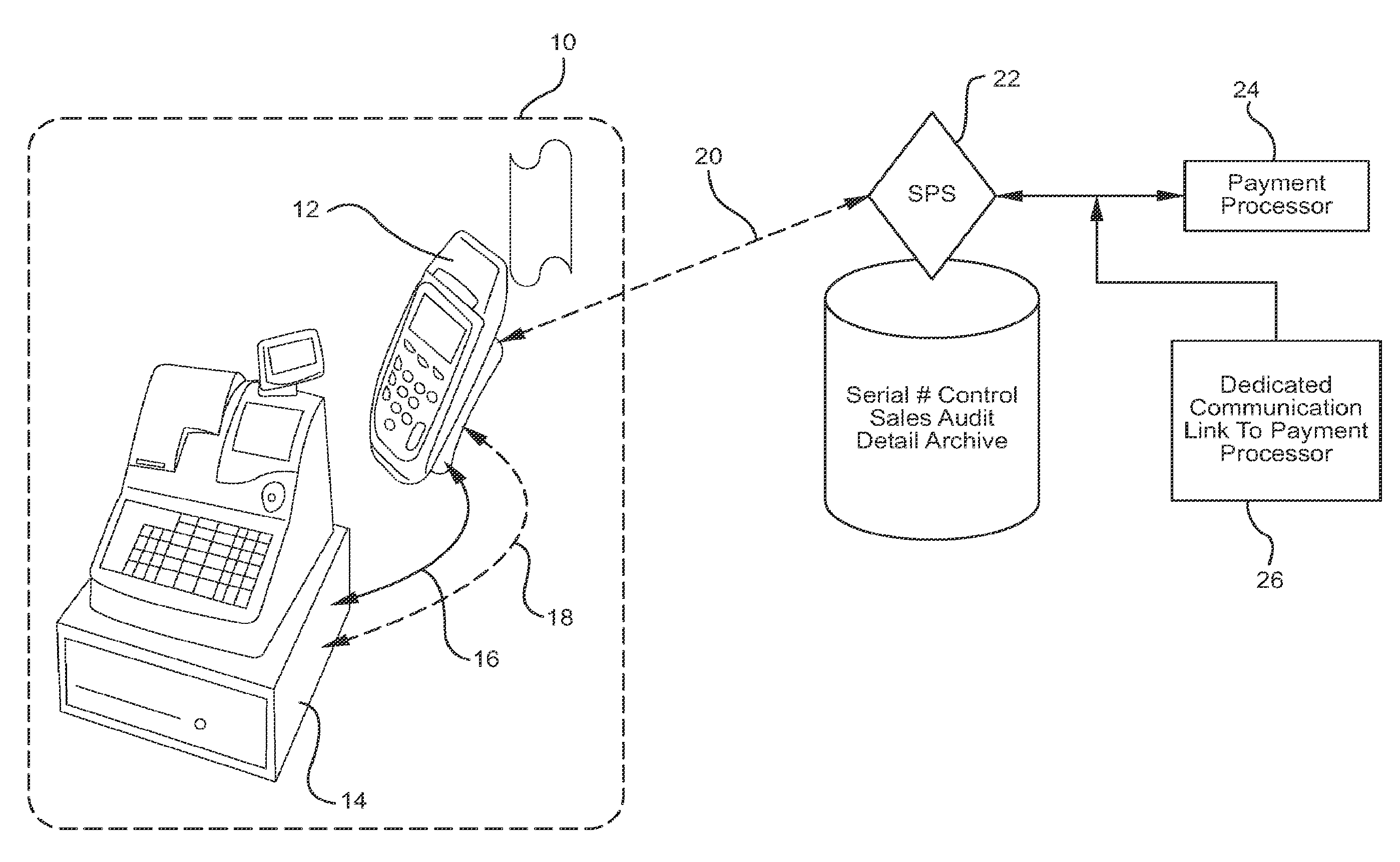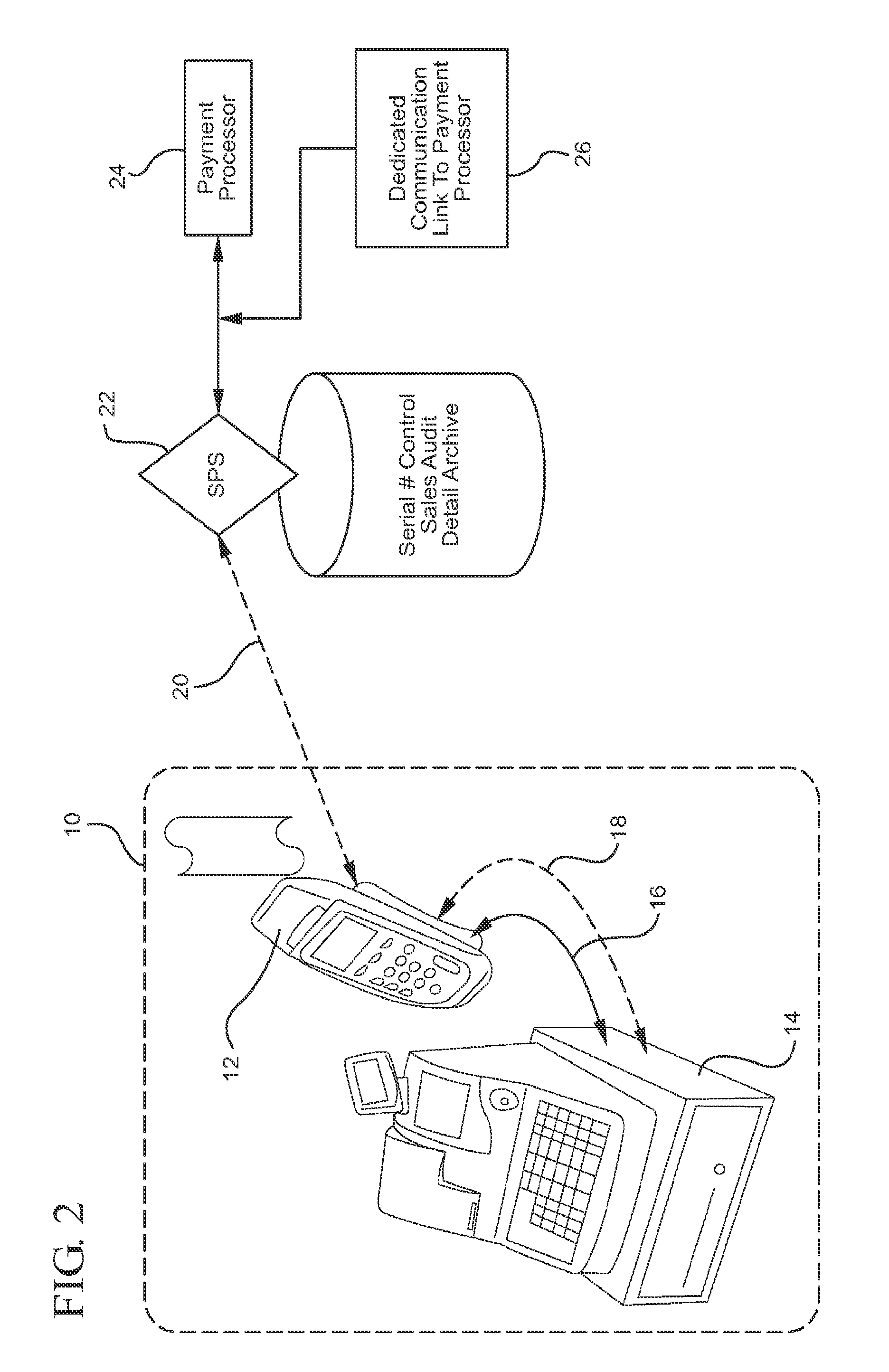Secure Payment Terminal
a payment terminal and terminal technology, applied in the field of secure payment terminals, can solve the problems of slow and expensive authorization and settlement with the card issuing entity, none of the transactions were very successful, and the credit card issuing entity was too difficult and expensive for small retailers to sell, so as to achieve the effect of increasing the efficiency of scale, extending the reach of credit cards, and high volum
- Summary
- Abstract
- Description
- Claims
- Application Information
AI Technical Summary
Benefits of technology
Problems solved by technology
Method used
Image
Examples
Embodiment Construction
[0038]The following terminology is used herein.
Cash RegisterA device used by retailers and other entities that collect payments formerchandise and services in a face-to-face serially numbered transactionfrom consumers. It generally displays the amount of the transaction to thecustomer and / or manager / owner of the selling facility to audit for accuracy,and provides a printed receipt for consumers, and a transaction journal, andaccumulates totals of transactions for balancing purposes.ECRAn electronic cash register operates from a program stored in non-volatilememory, and accumulates totals of sales in the register that may besummarized in the store by a master register or external device that extractsthe totals via a simplified in-store network.POSAn electronic cash register that operates from a program stored in volatilememory captures detailed data and communicates it to a head office foraudit and sales analysis.SRDA sales recording device or sales device that may be a POS, ECR, or ...
PUM
 Login to View More
Login to View More Abstract
Description
Claims
Application Information
 Login to View More
Login to View More - R&D
- Intellectual Property
- Life Sciences
- Materials
- Tech Scout
- Unparalleled Data Quality
- Higher Quality Content
- 60% Fewer Hallucinations
Browse by: Latest US Patents, China's latest patents, Technical Efficacy Thesaurus, Application Domain, Technology Topic, Popular Technical Reports.
© 2025 PatSnap. All rights reserved.Legal|Privacy policy|Modern Slavery Act Transparency Statement|Sitemap|About US| Contact US: help@patsnap.com



